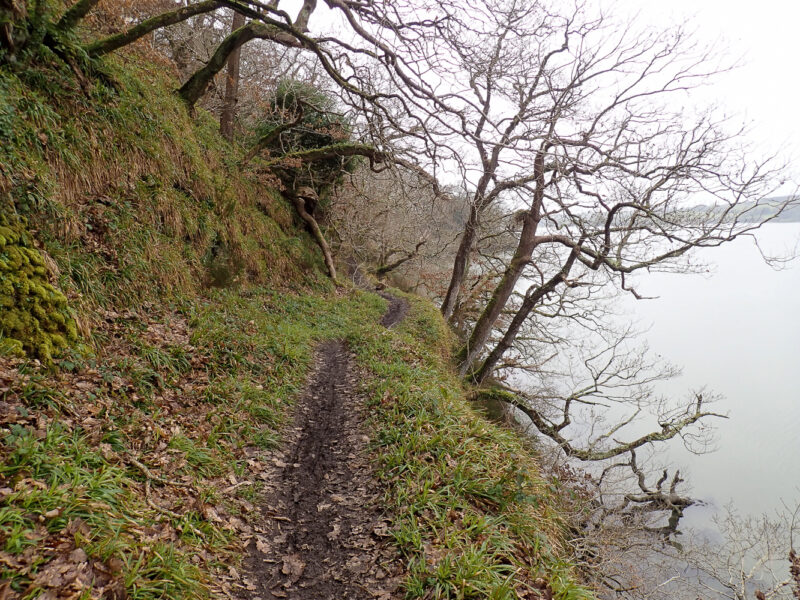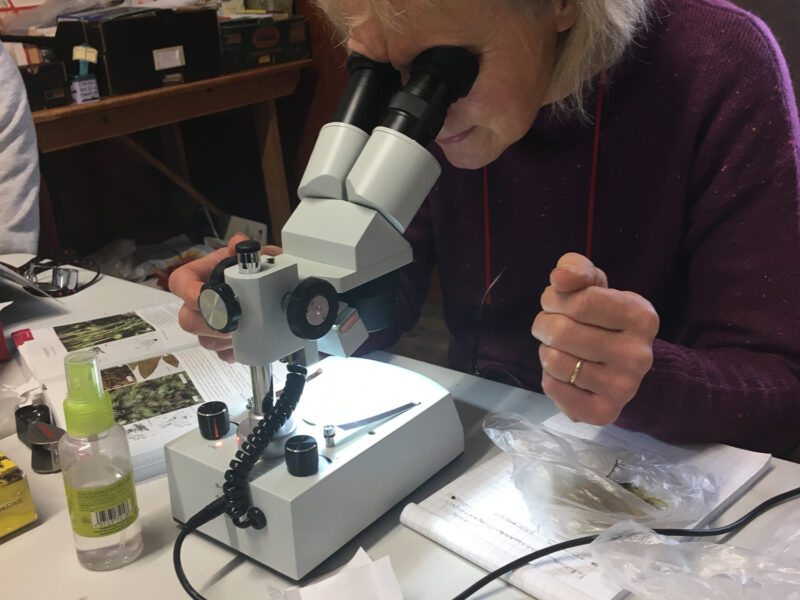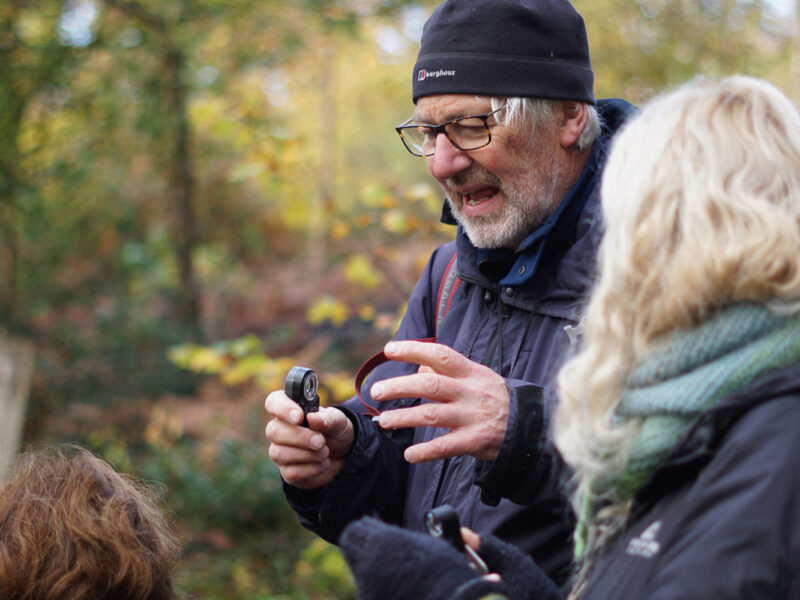Between 2020 and 2022 the BBS supported Plantlife with conservation projects involving Atlantic woodlands. These woodlands – also known as Celtic rainforest, or temperate rainforest – are atmospheric, humid woodlands with high rainfall, found along the west coast of the UK and in Ireland. Because of their high humidity and mild temperatures they are home to a luxuriant array of bryophytes, and the BBS has been involved with training people interested in learning more about bryophytes, with a view to increasing the level of recording in these areas.
You can read more about the conservation work that Plantlife are doing on their website https://www.plantlife.org.uk/uk/our-work/conservation-projects.
With the support of the Heritage Lottery Fund, Building Resilience is working in the Atlantic woodlands of Devon, Somerset and Cornwall.
Atlantic woodlands are one of Britain and Ireland’s most important habitats and, like any rainforest, are home to a vast diversity of plant life including oddities like the “string-of-sausages” lichen Usnea articulata and Stictas, a stinky lichen that smells of fish!
These woods have inspired generations of writers, poets and painters including Wordsworth and Coleridge. Thanks to National Lottery players, the Heritage Lottery Fund (HLF) has awarded Plantlife £433,700 to deliver the project over three and a half years from November 2018.
Bryophytes (mosses and liverworts) are small plants that are easily overlooked. Many of us enjoy the bright green carpets they form on trees and boulders, but never think much more about them. However, if you take a close look (and you know what to look for) a diverse and fascinating world is revealed. Bryophytes are a very rewarding group of plants to study, as the UK is home to over half of all Europe’s bryophyte species, and the bryophyte diversity of the south-west’s woods rival the cloud forests of the tropics.
Guidance for the management of Atlantic Woodland
Plantlife have also written two guides about the management of Atlantic Woodlands. One of these is aimed at woodlands in the Lake District, and the second is for the slightly drier and warmer woodlands of the South West of England. These guides are available to download by clicking the links below.
Plantlife Lichens & Bryophytes of Atlantic Woodlands in the Lake District - A Guide for Woodland Managers
Plantlife Lichens & Bryophytes of Atlantic Woodlands in South West England - A Guide for Woodland Managers
Update from Plantlife, January 2023
The Building Resilience in South West Woodlands project is now in its final stages and much of the last year has been spent analysing and evaluating the project data and outputs.
One of the project outputs is mapping work which is aimed at identifying sites in the south-west that are likely to support temperate rainforest lichen and bryophyte species. Plantlife have offered to share some of these resources with their partners.
- Storymap of the Rapid Rainforest Assessment
Purpose: To provide a summary of the Rapid Rainforest Assessment project, including the rationale behind the work, what the results tell us about temperate rainforest in south-west England, and information on how this data is being used to inform management.
The Storymap can be accessed here: https://storymaps.arcgis.com/stories/c32164813c724b4996cbe6599fb2ec4f
The other 2 resources are subject to licensing restrictions, so cannot be provided here. However if any BBS member would like to take up Plantlife’s offer, please contact the BBS at info@britishbryologicalsociety.org.uk, and we will make the necessary arrangements. Details of these resources are as follows:
- GIS map of south-west woodland and potential temperate rainforest sites
Purpose: To help identify areas of temperate rainforest in south-west England.
What it includes:
GIS layer of the region’s woodland including data from the National Forest Inventory and Ancient Woodland Inventory
Records of lichen and bryophyte species that are indicators of temperate rainforest (from NBN, BLS and BBS databases)
Rapid Rainforest Assessment (RRA) results layer including more detailed information on woodland habitat condition, habitat features and management issues for all 281 sites surveyed as part of our project.
- Interactive web map
Purpose: To allow you to explore the above dataset without requiring GIS expertise or software. This could be useful for local groups. You would be able to launch your own queries to investigate aspects of interest e.g. you could look at mapped indicator records for bryophytes alongside sites where surveyors recorded ‘woodland floor carpeted with bryophytes’ and habitat features such as ravines and waterfalls.
What it includes:
Interactive map accessed via a weblink.
The map includes the same data as provided in the GIS map described above (south-west woodland layer, indicator species records and RRA results).
Update October 2020
Looking Out for the Small Things (LOST) was a partnership effort to further understand and appreciate Atlantic oakwoods, alongside the lower plants that can be found there. Plantlife and its partners provided a series of training events and additional opportunities to get involved, generating the knowledge and skillset required to record and manage these special habitats.
The LOST project has now been completed, however the ID guides developed for the project are still available to download by clicking the links below:
Plantlife Lichens of Atlantic Woodlands in the Lake District (Lobarion)
Plantlife Lichens of Atlantic Woodlands in the Lake District (Parmelion)
Plantlife Mosses and liverworts of Atlantic Woodlands in the Lake District
For hard copies please contact Alastair Moralee by email at Alastair.moralee@plantlife.org.uk.












